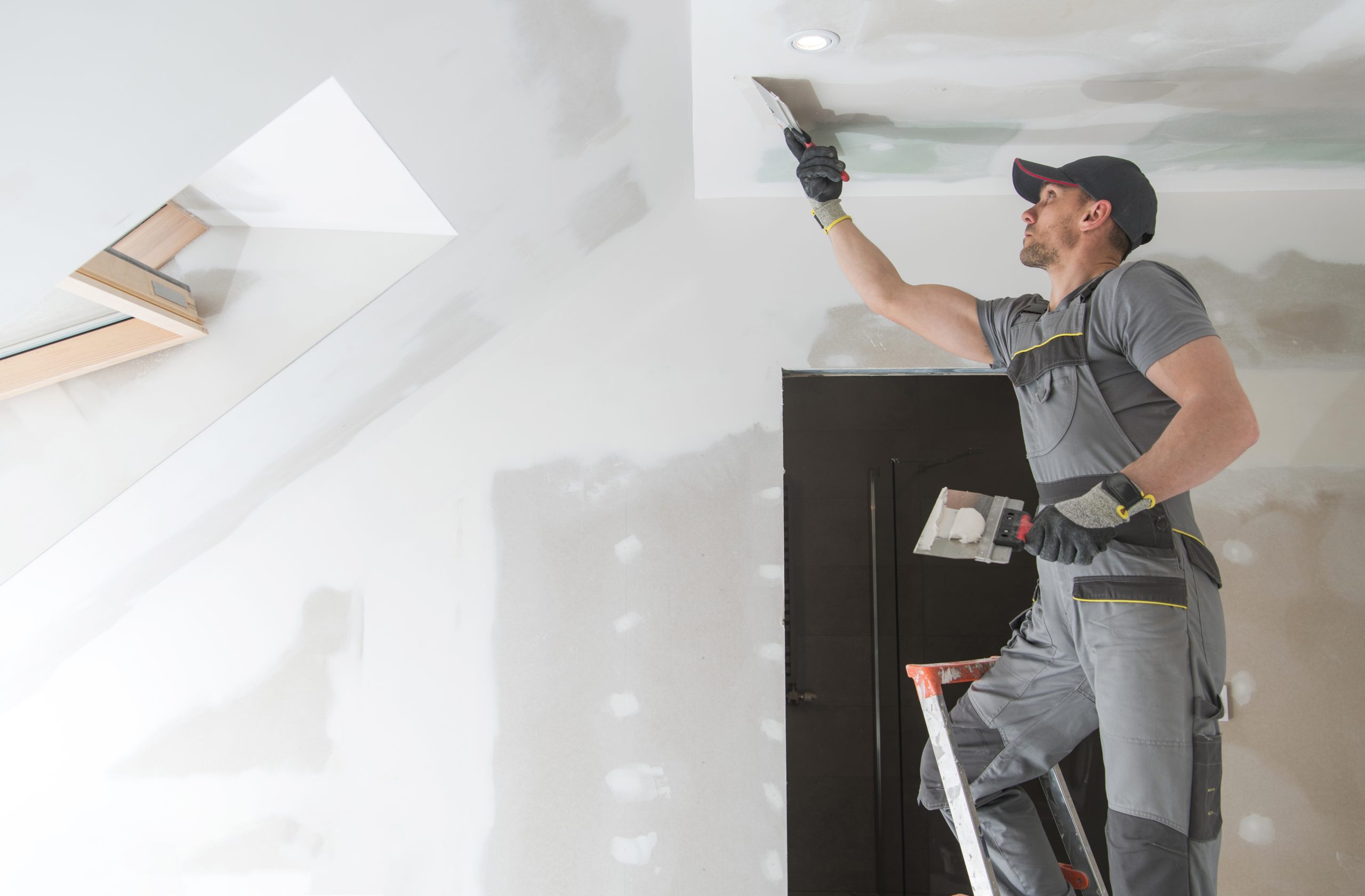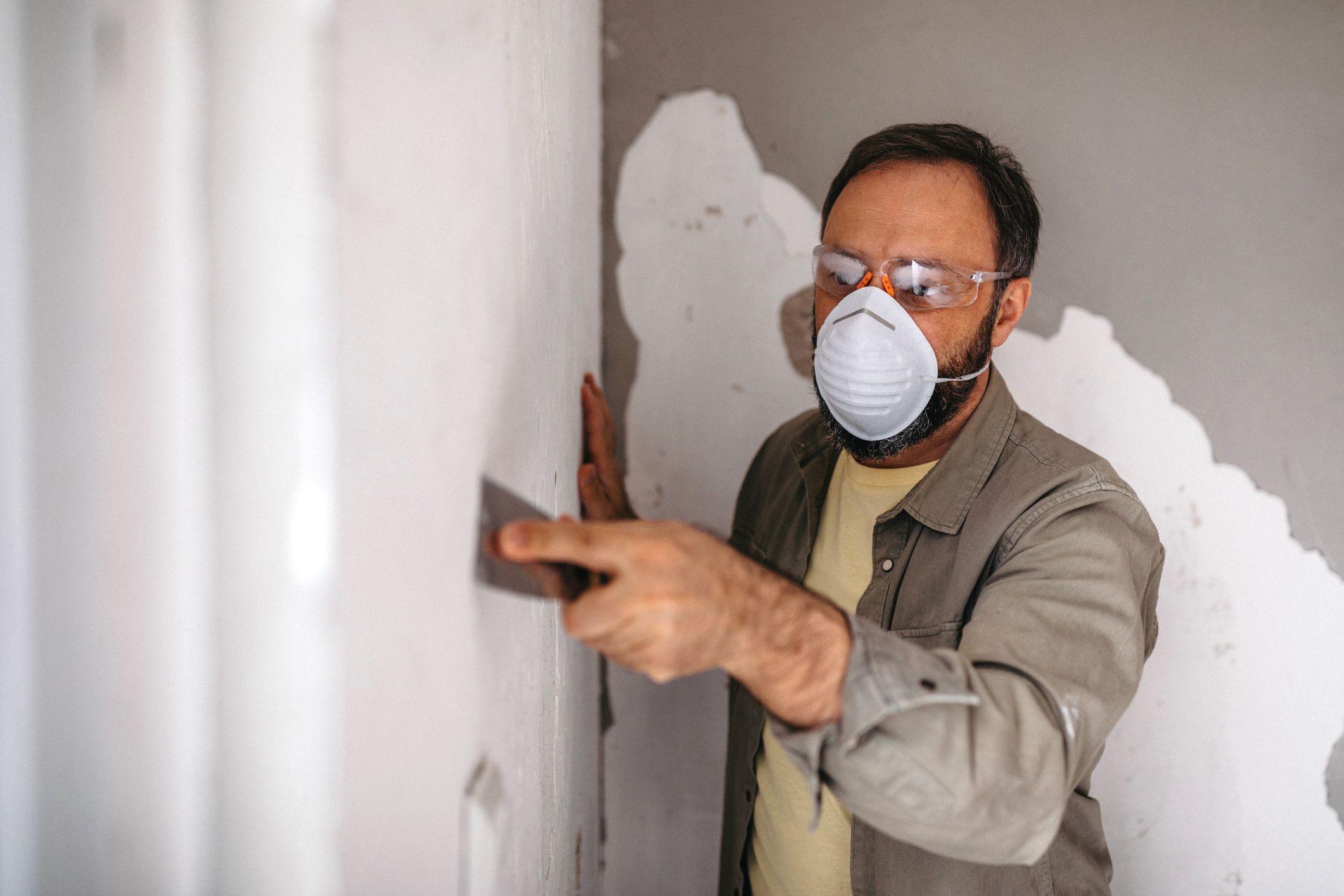A Comprehensive Overview to Mastering Drywall Repair Service and Installation
This overview provides an extensive exploration of drywall fixing and installment, accommodating both amateurs and seasoned specialists. It details important devices, methods for patching and hanging sheets, and the vital ending up processes. Interior Painting. By understanding usual risks, individuals can attain refined outcomes. Mastering these skills not just improves one's home but likewise develops confidence in do it yourself endeavors. What fundamental tips will guarantee a successful task from beginning to end?
Necessary Tools for Drywall Repair Work and Setup
When starting on drywall fixing and setup, a few vital tools can considerably boost the efficiency and high quality of the work. A drywall blade, normally available in various dimensions, is important for using joint substance and smoothing seams. A taping blade is additionally needed for feathering sides and guaranteeing a smooth coating. Additionally, a drywall saw or energy blade permits specific cutting of drywall sheets to fit any kind of area.

Step-by-Step Overview to Patching Holes
Covering holes in drywall is an uncomplicated procedure that can restore the wall's look and integrity. To begin, the location around the opening ought to be cleaned up and any loose debris removed. For tiny openings, a straightforward spackle or joint substance can be used with a putty blade. Bigger holes might need a spot; a piece of drywall can be reduced to fit the opening, protected with glue or screws, and then taped around the edges. When the spot is in place, joint compound is applied over the spot and feathered out to mix with the bordering wall. After the substance dries, sanding is essential to achieve a smooth finish. The fixed location can be topped and repainted to match the rest of the wall. This approach assures a seamless fixing, enhancing the overall appearance of the drywall and preserving its structural honesty.
Techniques for Hanging Drywall Sheets
After successfully repairing openings in drywall, the following step entails hanging brand-new drywall sheets to create a smooth surface. To achieve this, one need to begin by measuring the wall surface area precisely and reducing the drywall sheets to fit. It is crucial to hang the sheets horizontally for far better structural honesty, starting from the top and functioning downwards.
Making use of a drywall lift can streamline the process, especially for ceiling setups. Once placed, protecting the sheets with drywall screws at intervals of about 12 inches along the sides and 16 inches in the area is necessary. This guarantees a solid hold and lowers the danger of drooping. For corners, the sheets must be cut to fit well, permitting cleaner seams. It is a good idea to startle the joints between sheets to reinforce the general structure, producing a more sturdy surface all set for the following stage in the drywall setup procedure.
Ending Up Touches: Taping and Mudding
Completing the drywall setup includes the essential steps of mudding and taping, which assure a smooth and refined surface. Taping calls for the application of joint tape over the seams between drywall sheets. Interior Painting. This tape can be either paper or fiberglass harmonize, with each type offering one-of-a-kind benefits. After taping, the following step is mudding, where joint compound, or "mud," is related to cover the tape and load any imperfections
Using a drywall knife, the compound needs to be spread uniformly, making sure a feathery side to decrease visible adjustments. Multiple coats are usually required, with fining sand in between each layer to attain a smooth surface. Cautious focus during this process is vital, as it substantially influences the last look of the wall surface. With the ideal method and persistence, the end result will be a perfect foundation prepared for Click This Link painting or ending up touches.
Common Blunders to Stay Clear Of in Drywall Projects

One more usual blunder is not enabling enough drying time between layers, which can catch moisture and jeopardize the surface. Disregarding to feather the sides effectively can develop noticeable lines and blemishes. Ultimately, missing sanding or using improper techniques may leave harsh places. By being conscious of these risks, individuals can substantially boost the high quality of their drywall jobs and attain a professional-looking coating.
Regularly Asked Inquiries
Can I Fix Drywall Without Professional Help?
Yes, one can fix drywall without professional help. With the right devices, materials, and assistance, individuals can effectively take care of minor repairs. Significant damage might call for expert proficiency for excellent results and resilience.
The Length Of Time Does Drywall Substance Take to Dry?
Drywall substance commonly takes between 24 to 48 hours to completely try this out dry entirely, relying on factors such as moisture and temperature level. Thinner layers might dry out much faster, while thicker applications need even more time for perfect results.
What's the Best Sort Of Paint for Drywall?
The finest sort of paint for drywall is generally a water-based latex paint. It supplies outstanding insurance coverage, longevity, and simplicity of application, making it perfect for interior wall surfaces while allowing for simple cleaning with soap and water.

Exactly how Do I Prevent Mold on Drywall?
To stop mold on drywall, assurance appropriate ventilation, control moisture levels, utilize mold-resistant products, and immediately address any leaks. Normal inspections and instant removal of water damages are also important for lasting prevention.
Is Drywall Recyclable After Elimination?
Drywall is recyclable after removal, offered it is cost-free from pollutants like mold, paint, or other hazardous products. Reusing facilities can refine it right into brand-new products, promoting sustainability and minimizing land fill waste in building.
When beginning on drywall repair service and setup, a few important devices can significantly improve the effectiveness and quality of the job. After efficiently fixing openings in drywall, the following step includes hanging new drywall sheets to produce a seamless surface. Finishing the drywall installation involves the vital steps of taping and mudding, which ensure a refined and smooth surface. Accomplishing a polished finish in drywall projects can be tough, and a number of usual mistakes can threaten the top quality of the click to find out more job. Yes, one can fix drywall without professional aid.